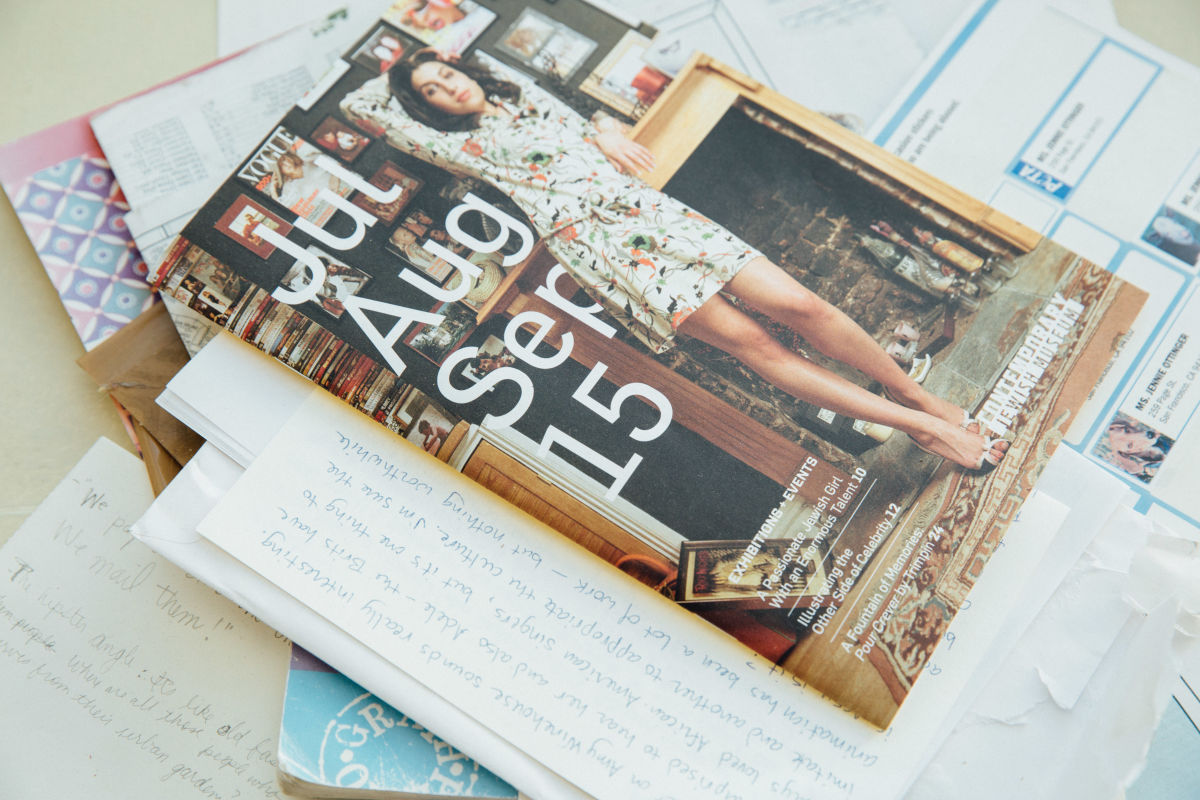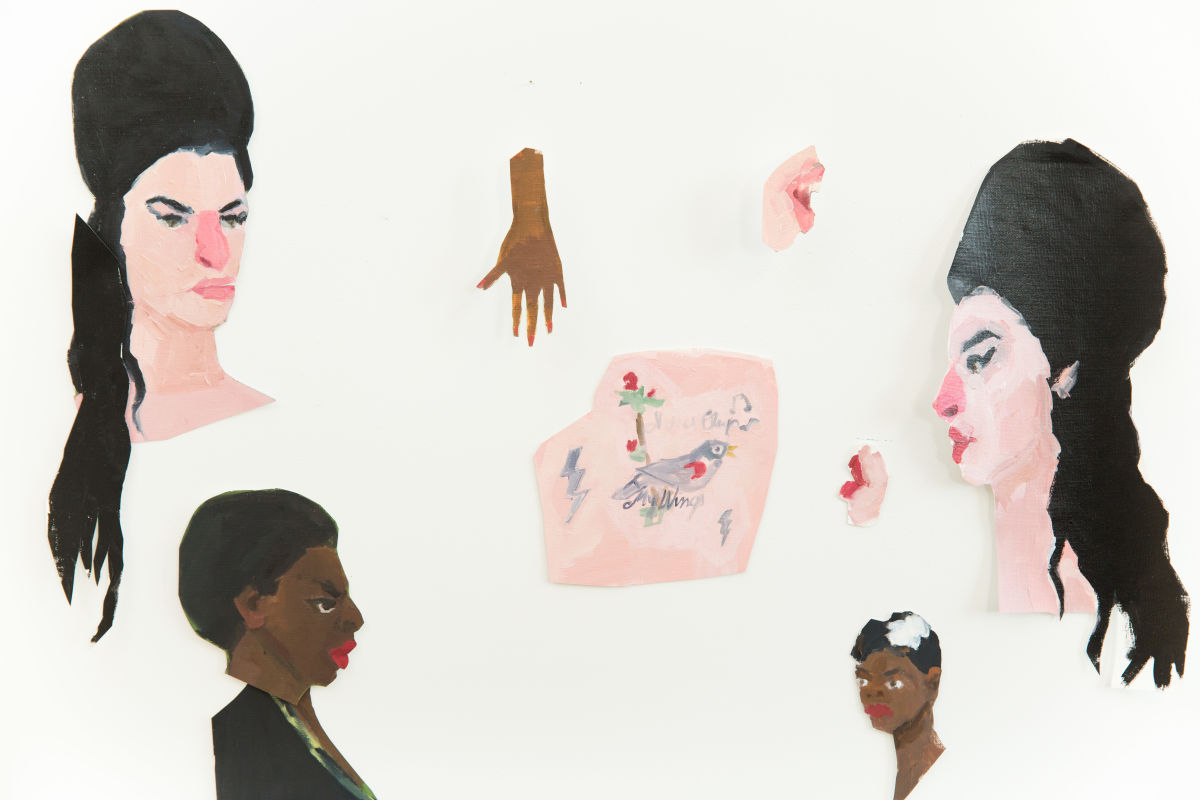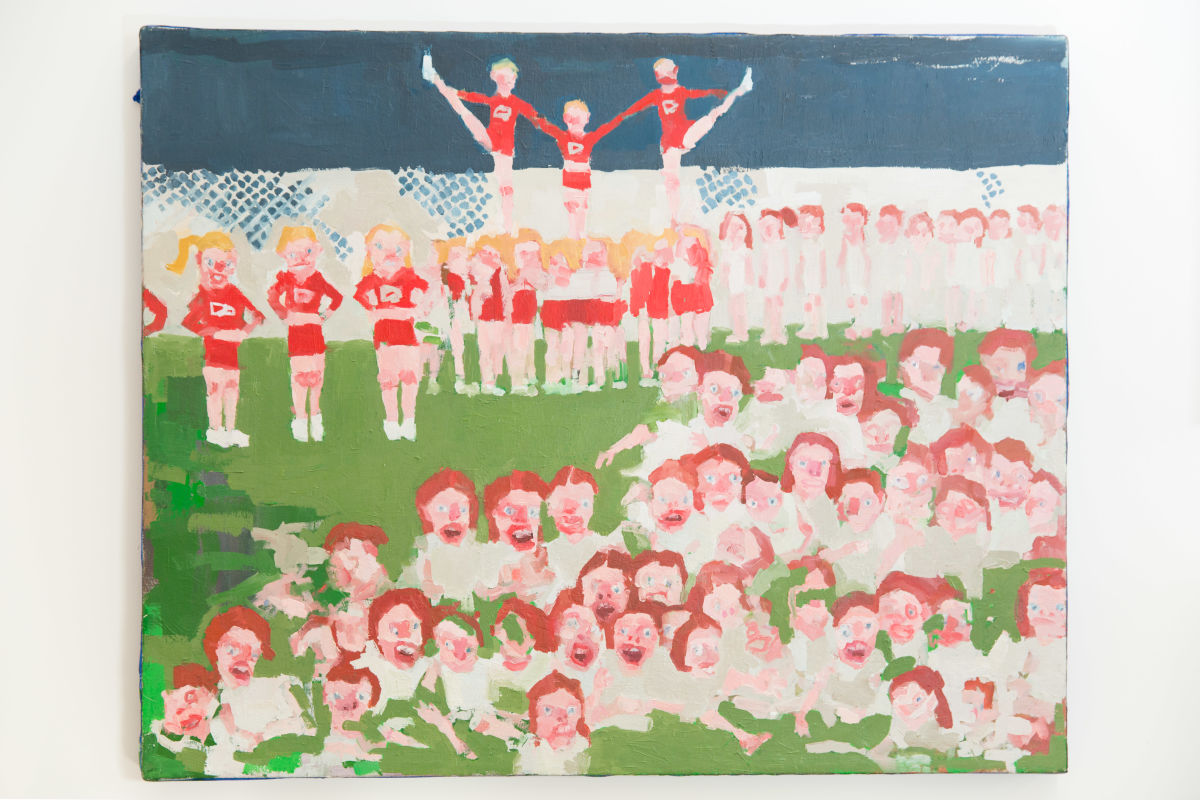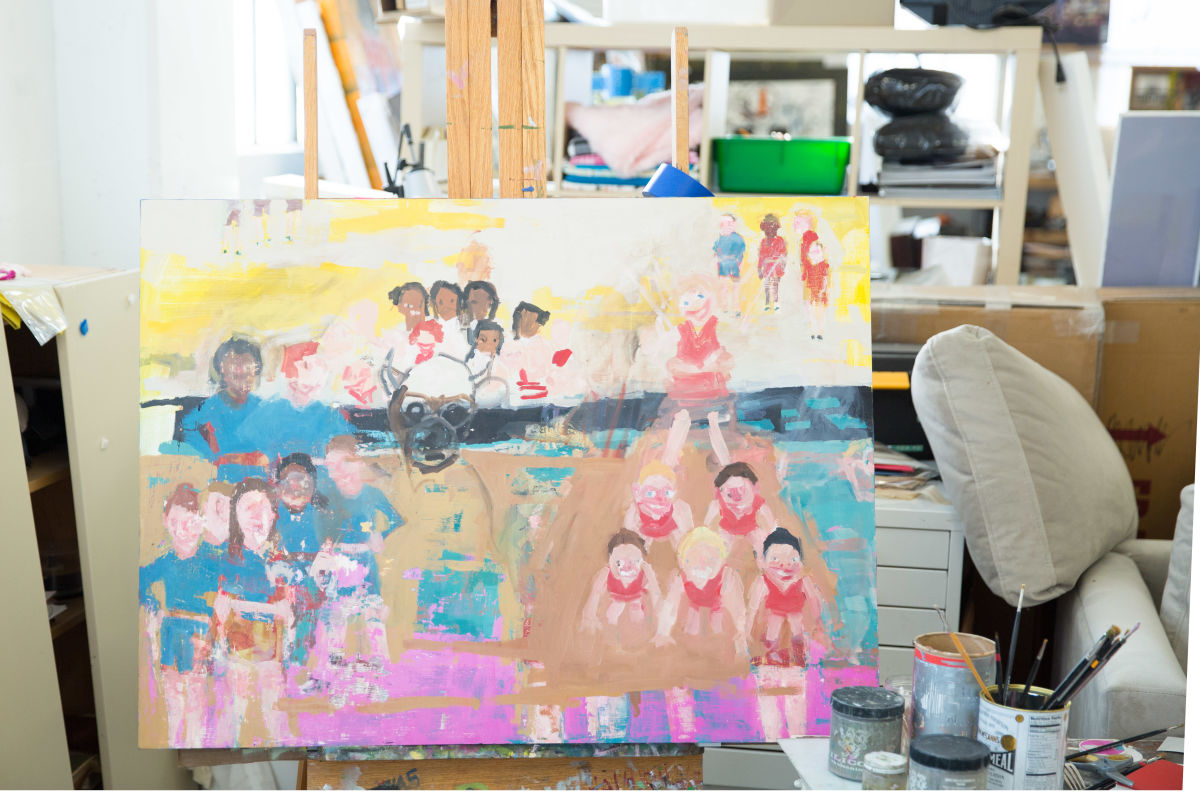Editor’s Note: Bay Area Painting Right Now peers into the studios of local painters to find out what they’re making, how they’re making it and why. Guiding our tour is Brandon Brown, poet, writer, editor and unabashed fan of contemporary painting.
“I cleaned,” Jennie Ottinger told me when I arrived at her studio in the Bayview. Her studio building is sprawling, cavernous and as big as a city block. We made our way to the ground floor where Ottinger shares space with a friend. And it was tidy, even with dozens of canvasses, sculptural objects and fragments of paintings lining the walls.
Ottinger’s paintings are — forgive me — intense. That word is so recklessly applied it becomes almost meaningless, but it fittingly addresses the extremes of play and pathos in her work. For all their wit and humor, Ottinger’s paintings are portraits of tense situations that provoke hard feelings.
The figurative vignettes she paints represent devastating scenes of belonging, alienation and the violence that accompanies these modes of being. She plays in this space as well, but her works aren’t totally irreverent; they traffic in real contemporary pain.

Painting is her primary medium, but like Lana Williams and Katie Dorame (the previous subjects of “Bay Area Painting Right Now”), Ottinger has an expanded sense of what is included in the activity of painting. Her studio contains plaster masks impaled on empty wine bottles, dissected and reassembled teddy bears, reimagined covers for famous books and a group of small fragmentary canvasses used in You Know I’m No Good,a stop-motion animated video about the late singer Amy Winehouse.
Some of these painting fragments are currently on view at the Contemporary Jewish Museum. Regrouped as an installation titled Mouth to Mouth,they are part of a companion exhibition to Amy Winehouse: A Family Portrait, a traveling show on Winehouse’s life and career.
Wall text accompanying Ottinger’s paintings at the museum addresses the problem of Winehouse’s cultural appropriation of African-American musical traditions. “I wanted to underline that as amazing as Winehouse was, she built on the work of talented predecessors who sadly never achieved the level of appreciation she did,” Ottinger says.

If Mouth to Mouth, which shows the severed and rearranged mouths of the Black singers Winehouse mined for her sound, look and musical ideas, alludes to this discrepancy, the animation You Know I’m No Good delivers the message explicitly. It shows a series of black singers emerging one by one against green screen. Nina Simone, the Supremes and other singers take turns as their tunes score a halting, sinister accumulation of figures. Suddenly, Amy Winehouse arrives from the left of the screen like a lily white beehived Godzilla and summarily devours the singers.
The allegory is obvious perhaps, but this video is remarkably both funny and ruthless. There’s no ambiguity or apology for Winehouse’s “appropriation” of Black music. Nor does Ottinger try to conceal or whitewash her own complicity or the potential complicity of her viewers in these social disasters. Her paintings instead offer frank and frequently grotesque stagings of them.
Ottinger is obsessed with clubs and groups; she went to Catholic schools and joined a sorority in college. Her paintings routinely explore tropes of camaraderie and organized shunning. A central example of this, expressed in canvas after canvas, is cheerleading. Cheerleading is a sport whose athletes proverbially control massive amounts of high school cultural capital. But in Ottinger’s representations, their solidarity is more menacing than merely cliquish.

In Try Outs, the brutal scenarios of group formation are emphasized by showing a massive pile of white faces with red hair sprawled on the ground in front of a cheerleading squad. The figures on the ground are literally “abject,” hurled together and cast away like indistinguishable grubs. Some of the cheerleaders are hard at play, stacking their bodies into a pyramid, a metaphor for the rigid social structures they tyrannically reinforce. The figures on the ground are virtually identical to the cheerleaders, except those who’ve made the squad are blonde, get uniforms and look down upon their peers with supercilious approbation.
Ottinger’s interest in cheerleaders as an allegory for various systems of supremacy has led her to study what I would call a cinematic masterpiece, the 2000 film Bring It On.
Bring It On tells the story of a champion squad of white cheerleaders from a rich LA suburb known as Rancho Carne. For years, they have stolen their routines from the all-Black East Compton High cheerleading team. Hijinks and internal conflicts ensue as Rancho Carne captain Torrance (Kirsten Dunst) attempts to bring reforms by relying on the squad’s own resources. In the end (spoiler alert), they finish second while East Compton deservedly wins the national competition.

Ottinger’s study of what many might consider a trashy teen rom-com will undoubtedly strike some viewers as simply witty or overly generous. But Bring It On,like Ottinger’s paintings, tells a crucial story about expropriation and insufficient reparations while also providing 100 minutes of true entertainment. Though the casual “good white girl” narrative of Bring It Onis rarely referenced in critical work on the film, Ottinger makes the insufficiency of that narrative legible.
A large canvas, still unfinished in her studio when I visited, shows the Rancho Carne cheerleaders and other squads in a triangle surrounding a larger-than-life image of the Rancho Carne mascot, a bull. Without this fearsome and glowering creature, the scene might read as celebratory. I keep thinking about the bull as a quasi-mythological harbinger of the real evil glossed over by the bouncing haircuts of Torrance and her friends. Like Amy Winehouse and her ilk, these squads try to pass off as beautiful what is finally stinking. Jennie Ottinger’s outrageous paintings show the gross transmissions that make the engine our culture move.